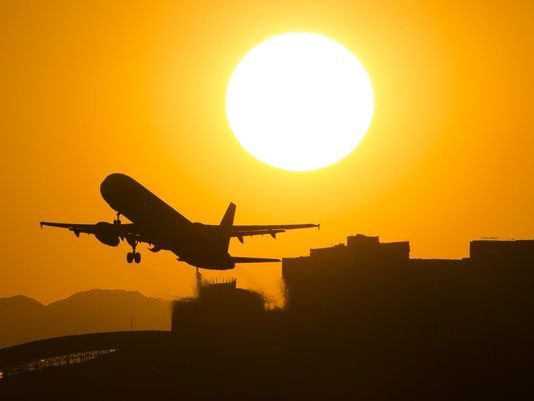Summer is a time when people embark on travel adventures, but the scorching heat may not be ideal if you plan to fly.
A seasoned pilot recently revealed that extreme hot weather can lead to flight cancellations.
All aircraft require “lift” to take off. This occurs when the airplane utilizes air pressure to stay aloft, balancing the gravitational force below, the drag from behind, and the thrust that propels the aircraft forward.

There is a maximum temperature limit; if the temperature exceeds this limit, the flight cannot depart.
However, air density significantly decreases under extreme heat conditions, making it difficult for planes to take off or land.
This means that temperatures at both your departure and destination points can determine whether your flight proceeds or gets canceled.
Captain John Cox told USA Today: “There is a maximum temperature limit; if the temperature exceeds that limit, the flight cannot take off. At very high temperatures, the payload capacity of an aircraft may be restricted. Sometimes it is necessary to reduce cargo and/or passenger loads because hot air is less dense, which decreases the available lift.“
Fortunately, planes can operate at high temperatures, around 43 degrees Celsius.
However, in 2017, over 40 flights were canceled in Phoenix, Arizona, when temperatures reached 48 degrees Celsius.
Aircraft also need to address the challenges posed by extreme temperatures affecting their complex machinery systems. In high-temperature conditions, the onboard air conditioning systems can fail, causing discomfort for passengers.
The most detrimental impact of this is severe dehydration for passengers or the onset of other heat-related illnesses.
Pilots must also regularly monitor engine and aircraft temperatures.
Regardless of the extreme heat conditions, the moment of takeoff for any flight occurs when the engines are at their hottest and operating at maximum power to generate more thrust and lift the aircraft into the sky.
Moreover, under extreme temperature conditions and lower air density, engines have to work harder and are at risk of overheating.
Pilots need to monitor engine temperatures by calculating both external and internal temperatures, while adjusting engine usage accordingly. However, this can affect the speed and functionality of the engines.




















































